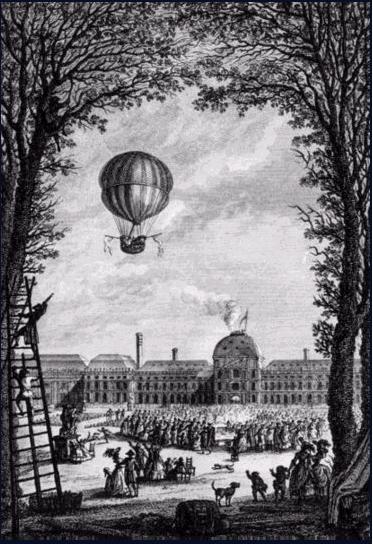It is particularly interesting to note, on
the representations of the guards as as well as in the central medallion
of the sticks, the presence above the balloon of a line of clouds, then
of the moon and finally of stars. With in addition the scientific objects
illustrated in the cartridges of the leaf, the intention of the eventaillist
(or of his customer?) appears clear : he is aware that it is a first
step in the conquest of space.
Benjamin Franklin, a witness of these flights,
was asked by skeptic asking "What is the interest of these experiments
?". He answered with wisdom : " " and how useful is a new born baby
?"
Many of us still can remember the general
enthusiasm during the first flights around tour planet, or when looking
at the first steps on the moon. Then they understand more easily how
the first ascents in balloon could put in boiling all the society of
that time, making even fans, seemingly futile objects, witnesses of
the hope of humanity in mankind progresses, and perhaps, as this fan
is a feminine accessory, a contribution to sex equality ?
As
soon as 1784, the Ballonmania was speading in different parts of France
(and other countries). The French "Cercle de l'Eventail" has issued an
interesting note about a balloon which was launched in Nantes. We are
authorised to reproduce it here (It is in French !)
And we add also another very pleasant ballooning fan !


